
I.Q.: Intelligent Qube, also known as Intelligent Qube in North America and Kurushi in Europe, is a puzzle video game for the PlayStation. In the game, the player controls a character who must run around a platform made of cubes, clearing certain cubes as they approach. Cubes are "cleared" by marking a spot on the stage, waiting for the cube to roll on top of it, and then deactivating the marked spot.
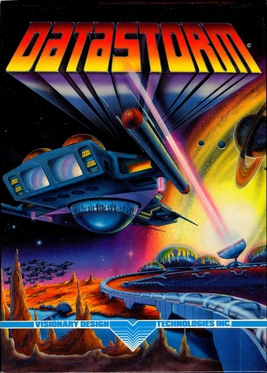
Datastorm is a video game for the Amiga published by Visionary Design in 1989. Written by Søren Grønbech, it was inspired by the horizontally scrolling Defender arcade game and the Defender-like Dropzone originally released for the Atari 8-bit family.

Tron is a coin-operated arcade video game manufactured and distributed by Bally Midway in 1982. The game consists of four subgames inspired by the events of the Walt Disney Productions motion picture Tron released earlier in the summer. The lead programmer was Bill Adams. The music programmer was Earl Vickers.
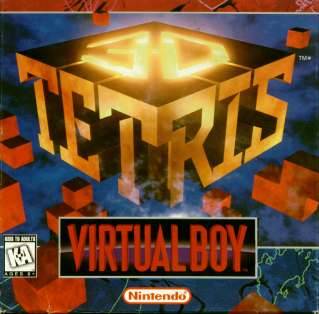
3D Tetris is a 1996 puzzle video game developed by T&E Soft and published by Nintendo for the Virtual Boy. It was released on March 22, 1996, in North America. Players control multiple falling blocks, rotating and positioning them to clear layers in a three-dimensional environment similar to Tetris's gameplay. The game contains multiple modes and variations thereof, as well as different difficulty settings and levels. Parts of 3D Tetris are rendered as 3D wire-frame models. A version of the game entitled Polygo Block was set for release in February 1996 in Japanese markets, but was never released. The game received mostly negative reviews with critics panning it for a lack of originality.
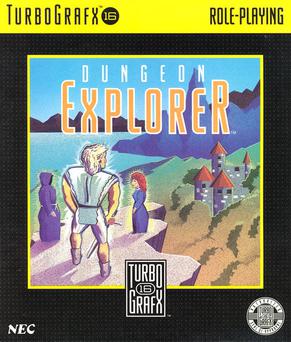
Dungeon Explorer is an action role-playing video game developed by Atlus for the TurboGrafx-16 and originally published by Hudson Soft in Japan on March 4, 1989, and later in North America by NEC on November 15 of the same year. The first installment in the eponymous franchise, the game is set in the land of Oddesia, which has been overrun by an alien race and where players assume the role of one of eight main characters tasked with recovering the Ora stone to kill the alien king Natas. Co-directed by Kazutoshi Ueda and Yōsuke Niino, the title was created by most of the same team that would work on later several projects such as entries in the Megami Tensei series. Though it was initially launched for the TurboGrafx-16, it was later re-released through download services for various consoles.

Low G Man: The Low Gravity Man is a platform game developed by KID and published in 1990 by Taxan in North America and by Nintendo in Europe for the Nintendo Entertainment System.

Alien Crush is a pinball video game developed by Compile for the PC Engine/TurboGrafx-16. It was released in 1988. The game is the first installment in the Crush Pinball series. It was followed by three sequels, Devil's Crush, Jaki Crush, and Alien Crush Returns. Alien Crush was later rereleased on the Virtual Console and on the PlayStation Network.

Mickey's Ultimate Challenge is a puzzle video game developed by WayForward Technologies and co-published by Walt Disney Computer Software and Hi Tech Expressions for the Super NES, Game Boy, Genesis/Mega Drive, Master System, and Game Gear. The Master System version, released in Brazil by Tectoy in 1998, was the last game released for that console in the country. All other versions were released in 1994. Players move Mickey through the game by making him walk, jump, and go through doors. There are five major challenges, a segue, and a final challenge. It was met with mixed reviews from gaming magazines.

Obsidian is an action-adventure computer game for the Amstrad CPC personal computer published by Artic Computing in 1986. The game is set on the titular space station located within the centre of an asteroid, which is out of control and drifting towards a black hole. The player must guide an astronaut with a jet pack around the station and re-activate its engine shields to prevent the Obsidian's destruction. This involves collecting items and using them to solve puzzles, while avoiding the Obsidian's reactivated security systems.

Burai Fighter is a shoot 'em up video game developed by KID for the Nintendo Entertainment System. The game was released in North America by Taxan in March 1990, Europe by Nintendo and Australia by Mattel in 1990, and Japan by Taito on July 20, 1990. The game was also ported to the Game Boy and retitled as Burai Fighter Deluxe, and was released in Japan on June 27, 1990, in North America in January 1991 and in Europe in 1991; this port eventually wound up on the Game Boy Color as Space Marauder, originally released in Japan as Burai Fighter Color, as the original Game Boy version is not compatible with the later models.

Isolated Warrior is a 1991 video game developed by KID and published in Japan by Vap, in North America by NTVIC, and Europe by Nintendo. It falls in the shooter genre, although its gameplay also includes elements reminiscent of platforming, while it features isometric projection, similar to Sega's Zaxxon.

Aliens is a 1990 run and gun video game developed and published for arcades by Konami. It is based on the 1986 film of the same title. Two players can play the game cooperatively in addition to single-player.
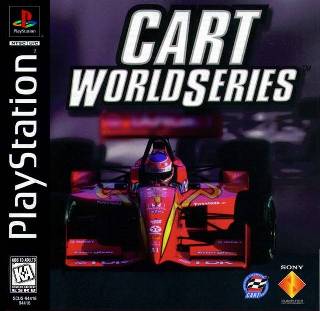
CART World Series is a racing video game for the PlayStation console, developed by Sony Interactive Studios America and published by Sony Computer Entertainment and released in October 1997. CART World Series is based on the Championship Auto Racing Teams (CART) open-wheel racing series.
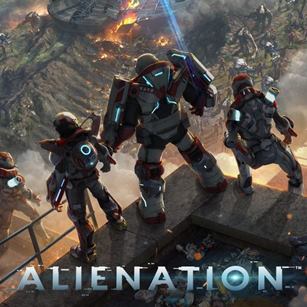
Alienation is an action role-playing shooter video game developed by Housemarque and published by Sony Interactive Entertainment for the PlayStation 4. It was released in April 2016 worldwide. The game is an isometric twin-stick shooter in which one to four players defend themselves against an alien invasion on Earth through increasingly-difficult levels. Players can choose one of three character classes, each with its own abilities. Players can upgrade their weapons with collectables, known as upgrade cores.

Rare Replay is a 2015 compilation of 30 video games from the 30-year history of developers Rare and its predecessor, Ultimate Play the Game. The emulated games span multiple genres and consoles—from the ZX Spectrum to the Xbox 360—and retain the features and errors of their original releases with minimal edits. The compilation adds cheats to make the older games easier and a Snapshots mode of specific challenges culled from parts of the games. Player progress is rewarded with behind-the-scenes footage and interviews about Rare's major and unreleased games.

Lara Croft Go is a turn-based puzzle video game in the Tomb Raider series. The player moves Lara Croft as a puzzle piece through a board game while avoiding obstacles and manipulating the environment. The developers distilled major series motifs, such as boulder-chases and reaction-based gameplay, to suit Lara Croft Go's time-independent gameplay. Square Enix Montréal developed the game as a spiritual successor to its 2014 Hitman Go, based on another Square Enix Europe franchise. It was released in August 2015 for Android, iOS, Windows, and Windows Phone devices. Versions for PlayStation 4, PlayStation Vita and Steam were released in December 2016.

Tharsis is a 2016 strategy video game developed and published by Choice Provisions. It was released worldwide in January 2016 for Windows and Mac OS X through the download service Steam, as well as for PlayStation 4, and later in April 2020 for the Nintendo Switch. The game follows a team of astronauts on the first crewed mission to Mars, in order to track down a signal that is apparently extraterrestrial in origin. After being hit by a micrometeorite storm, they must resort to desperate measures to survive the trip.

Titan Attacks! is a fixed shooter video game developed and published by Puppy Games and released on March 13, 2006 for Windows, Mac OS X and Linux. The game was also published by Curve Studios and released on May 6, 2014 for PS3, PS4 and Vita, on February 26, 2015 for 3DS, and on September 17, 2016 for Android.

Halcyon 6: Starbase Commander is a strategy video game and turn-based tactical RPG hybrid developed and published by Massive Damage. It was released on September 8, 2016 for Windows, OS X and Linux, and October 19, 2017 for iOS. Taking place in a science fiction setting, the player must reclaim and rebuild the derelict ancient space station Halcyon 6 in order to stop an impending alien invasion of Earth.

Bedlam is a first-person shooter game developed by British studio RedBedlam and published by Standfast Interactive. It was released on October 13, 2015 for PlayStation 4 and October 16, 2015 for Xbox One. Based on the novel Bedlam by Christopher Brookmyre, it follows an ordinary Scottish woman named Heather Quinn who is trapped inside the body of a video game character and must fight her way through several environments inspired by 1990s and 2000s first-person shooter games.





















